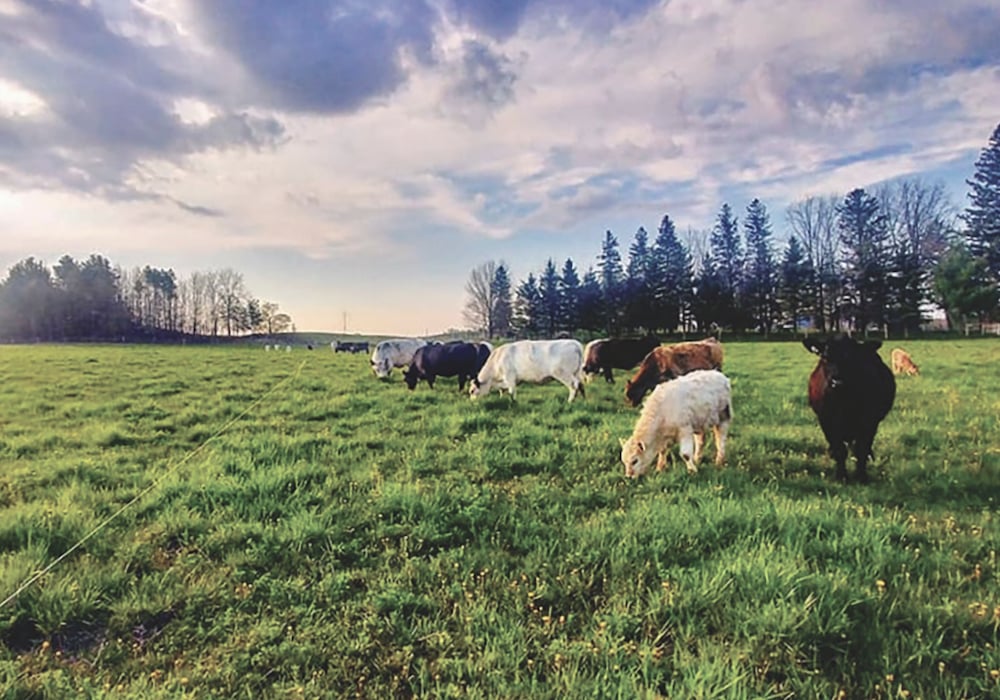Conference panelist questions research favouring grain-finished beef

Comparing the climate impact of grass-fed versus grain-fed beef isn’t straightforward, according to panelists at the Guelph Organic Conference.
Read Also

Digital medicine gives farmers easier access to veterinary care
Canada has a growing nation-wide shortage of veterinarians, particularly in rural and remote areas. An Ontario start-up has launched a…
A recent study claimed grain-fed beef has less of a carbon impact, but Chepstow-based farmer Ted Zettel believes it failed to account for the long-term capacity of pasture-based farming to sequester carbon from the atmosphere.
Why it matters: Cattle groups say beef production can mitigate climate change.
Zettel, who runs Zettel Family Farms with his sons Mark and Sam, spoke on a panel about grass-fed and organic cattle production.
“I realize there is a spectrum of production techniques (but) … these are ruminants,” Zettel said. Cattle efficiently convert forage to food, and “I wouldn’t want to try and defend [the climate impact of] cattle raised on grain and corn.”
Panelist Phil Woodhouse of the Beaver Valley, who operates a cow-calf business, highlighted recent research that favours grain-fed production in terms of climate mitigation.
“Ruminants are great for taking energy and making meat out of it,” said Woodhouse, who also works in beef product sales for Jones Feed Mill.
When young, most types of cattle can efficiently turn grass into energy. As they approach finishing weight, grain diets take over on the feed-efficiency side so the carbon footprint of growing grain is eclipsed by the food produced.
Zettel questioned the scale of recent research. He believes carbon sequestration achieved by maintaining permanent pasture gives his farm’s system a significant advantage over those that finish animals with grain.
The comparison is even more favourable when looking at confinement feedlot operations, he added. However, Zettel described the climate impact discussion as a sideline to the typical grass-fed beef value chain.
Zettel Family Farms markets a range of organic meat products online for delivery or on-farm pick-up. Mark Zettel and his wife, Emily, run a community-shared agriculture-style market garden and Ted also brokers beef for other grass-fed producers in the area.
He said climate change effects tend to be low on the priority list for the farm’s consumers. Price, quality and familiarity with the farmer rank higher.
He senses distrust among some consumers with any certification process. People seem worried about influence from farm groups and their failure to respond to consumer concerns so face-to-face contact is important, said Zettel.
He and Woodhouse agreed that British breeds outperform European breeds when finishing cattle on grass. With grass-fed, Woodhouse added, the shorter stature, high-capacity phenotypes within those breeds tend to do better.
Grazing effects
The other panelist, beef specialist James Byrne from the Ontario Ministry of Agriculture, Food and Rural Affairs, cautioned that grazing pastures and growing pastures are two separate processes.
“They are inter-related. Obviously, in order to have cattle that pasture, you have to grow it,” but it takes skill to manage grazing so the pasture is profitable.
Pastures are dynamic and will vary day to day, said Byrne, but the nutritional needs of cattle are relatively stable.
Given the opportunity, cattle are selective when grazing. To demonstrate why this presents a challenge, Byrne showed the growth curve of a pasture through spring, early summer, late summer and fall. The dry matter intake curve that accompanies this growth curve is similar for all grasses, he said.
“As humans, we can look at the (late summer) field and see a lot of grass. But a cow looks at the field and sees not a lot to eat.”
Cattle will seek forage other than the coarse-stemmed, mature and seedy grasses that often populate a late-summer pasture.
“You can force them to graze it but that’s not good for economic performance.”
Rotational grazing is one strategy to address this summer slump, though it’s not suitable for every operation or for every bovine.
For herds in which average daily gain isn’t a priority, it could be a mistake to regularly send animals into high-quality, growing pasture. Breeding animals, for example, don’t need a high level of quality feed, said Byrne. In those cases, lengthening the rotation might work better.
On a grander scale, effective rotational grazing can improve a herd’s economic performance.
Woodhouse said rotational grazing is easier to do on larger-scale farms and ranches due to the labour requirements. He has customers who are happy to have lower gain over the summer on permanent pasture and then finish the cattle on grain in the fall.
Zettel countered the thought that labour requirements can be too high. If a good system is installed and established, rotational grazing can be labour efficient, he said.
“When you get good at it, it doesn’t take long at all, and I think that’s the path to maximizing the soil improvement.”
Source: Farmtario.com

